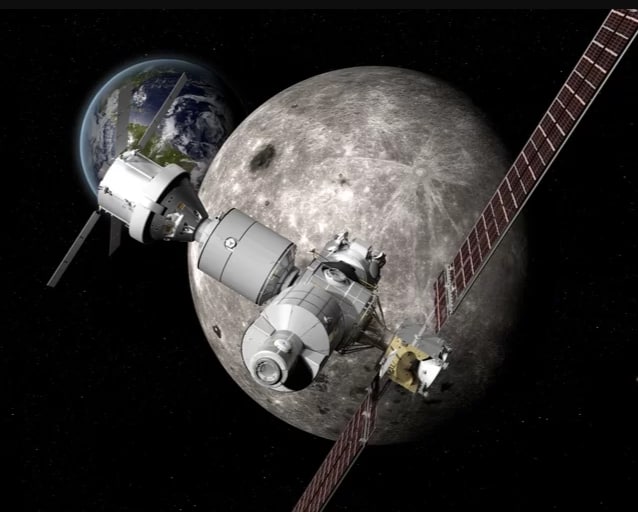
For a while now, NASA has been developing an orbiting lunar outpost to serve as a test bed for new technologies and science experiments, as well as a staging area for crewed and robotic missions to the moon and, eventually, Mars.
Initially called the Deep Space Gateway, it’s been redubbed the Lunar Orbital Platform-Gateway.
But the name isn’t as important as the frontiers it’s meant to open for human discovery and exploration, said Patrick Troutman, a space architect at NASA Langley Research Center in Hampton.
As far as Troutman is concerned, the Gateway is “the beginning of Star Trek.”
“It’s not just the Gateway,” said Troutman. “It’s why we’re investing in rockets and in capsules and the Gateway and how they all merge together to make a more sustainable future for space exploration.
“A lot of people think the Gateway is a mission — it’s not. It’s a piece of infrastructure we’ll use to do other things better.”
Troutman is scheduled to present a free public lecture on “Cislunar Space: the Gateway to Future Exploration” at 7:30 p.m.Tuesday, May 1, at the Virginia Air & Space Center in downtown Hampton. He’s to appear as part of NASA Langley’s monthly Sigma lecture series.
The Gateway infrastructure will be delivered to orbit and assembled one big piece at a time, starting in 2020 with a solar electric propulsion system. Subsequent missions will add a habitat system and an airlock for docking spacecraft. Then, in 2023, the first crew.
International and commercial partners may eventually add their own airlocks or habitats, Troutman said, assembling a “little international space depot” to support lunar and Mars missions.
The Gateway won’t be another International Space Station, however. It’s designed to be much smaller, with crew stopovers of 30 days’ duration or less.
And that’s the point, Troutman said.
“What’s unique about the Gateway is, we want something that doesn’t have people on it so we can understand human systems that are robust and reliable without people being there,” he said.
This is important because a vehicle leaving the Gateway for, say, the Martian system will stay in orbit while humans are on the surface, perhaps for up to a year, he said.
“And there’s no one up there tending to it, and that’s your ride home,” Troutman said “So if it’s not robust, if it can’t take care of itself, they’re not getting back from Mars.”
Once constructed, the Gateway will be used first as a staging outpost to explore the moon and its resources, starting with robotic systems.
“I like to call it the invasion of the robots,” Troutman said.
Those robotic explorers are to find out how hard it would be to mine critical in situ resources — regolith materials that could be used for propulsion, for instance.
Because the platform will orbit in higher-radiation cislunar space — at the edge of Earth’s powerful gravity well — it will also enable science experiments in astrophysics, heliophysics, life sciences and biology that are unique from those aboard the space station, which operates in low-Earth orbit and is thus more affected and protected by its magnetic field.
Also, with the Gateway perched on the edge of Earth and lunar gravity wells, spacecraft voyaging from the outpost deeper into space won’t need the brute force of big rockets to get them on their way, but more efficient and refined solar electrical propulsion systems, instead.
“Even within NASA, people think about (the Gateway) as that’s the point: We build it, we’re done,” Troutman said. “Well, no. You build it and then use it to achieve greater missions. And those greater missions are what we do on the moon. They are what we do on Mars. They are the science sample return. They’re all the science we can do with it.”
Julie Williams-Byrd, acting chief technologist at NASA Langley, recommended Troutman for the lecture series because of the country’s “lunar pivot” to return humans to the moon and because of his expertise and passion for the subject.
“Pat is a great speaker and can communicate the most complicated information in a way that everyone can understand, whether you are technical or not,” Williams-Byrd said.
The Air & Space Center is located at 600 Settlers Landing Road.
